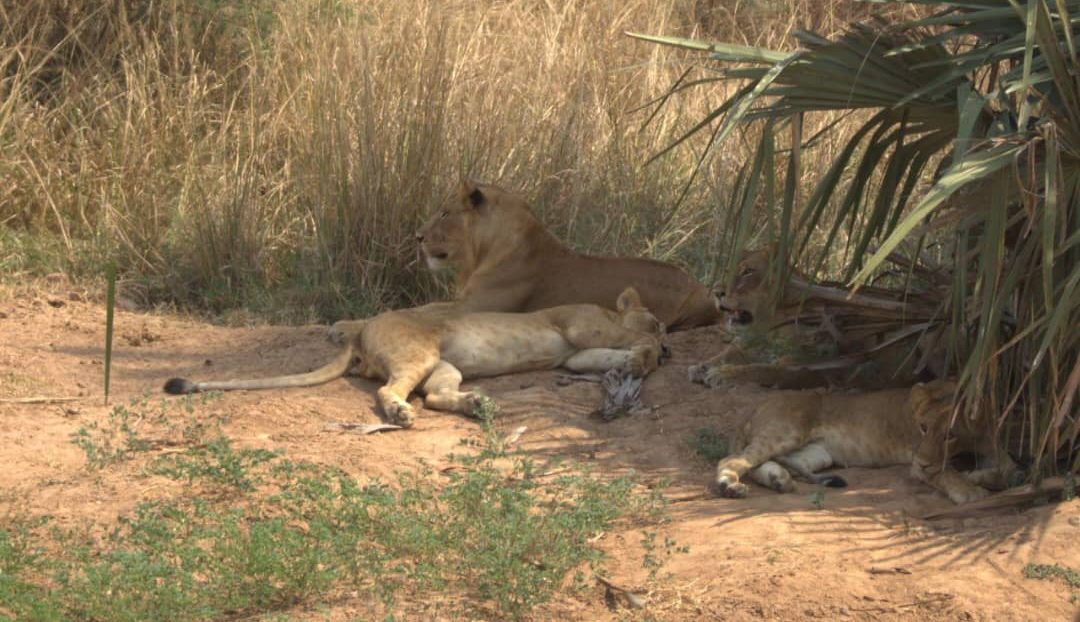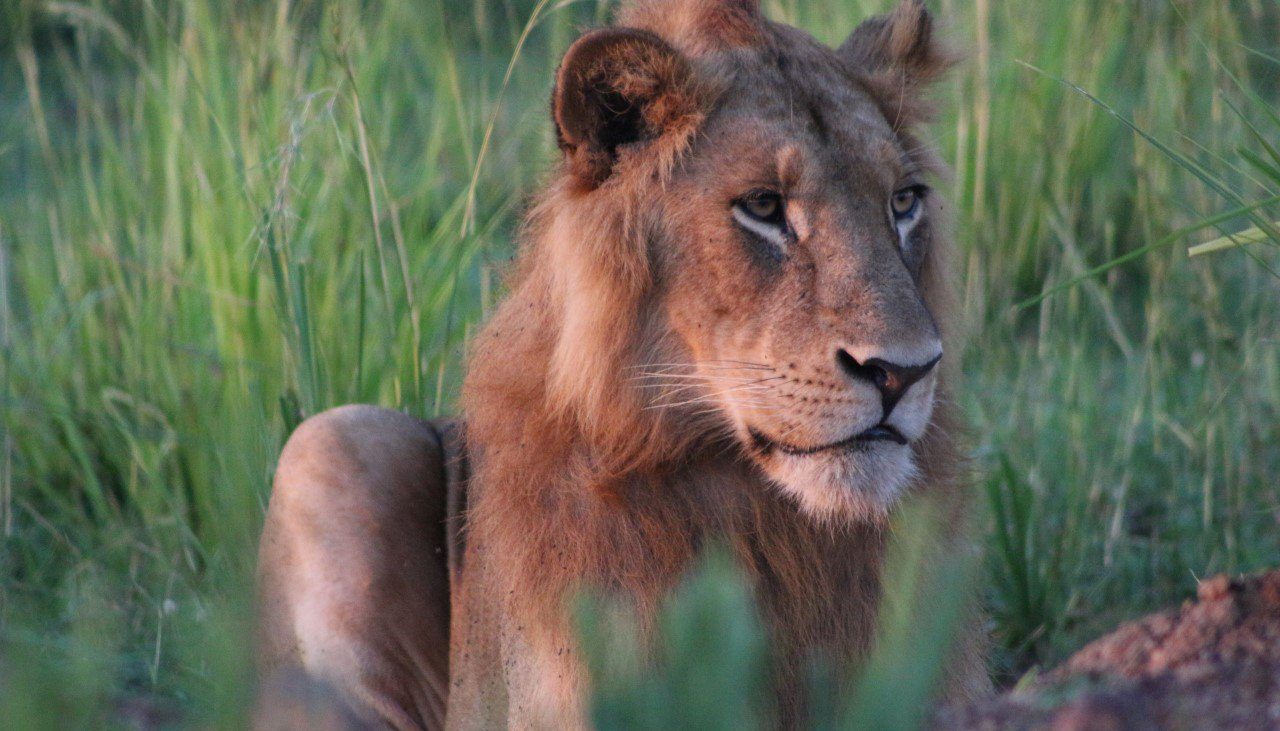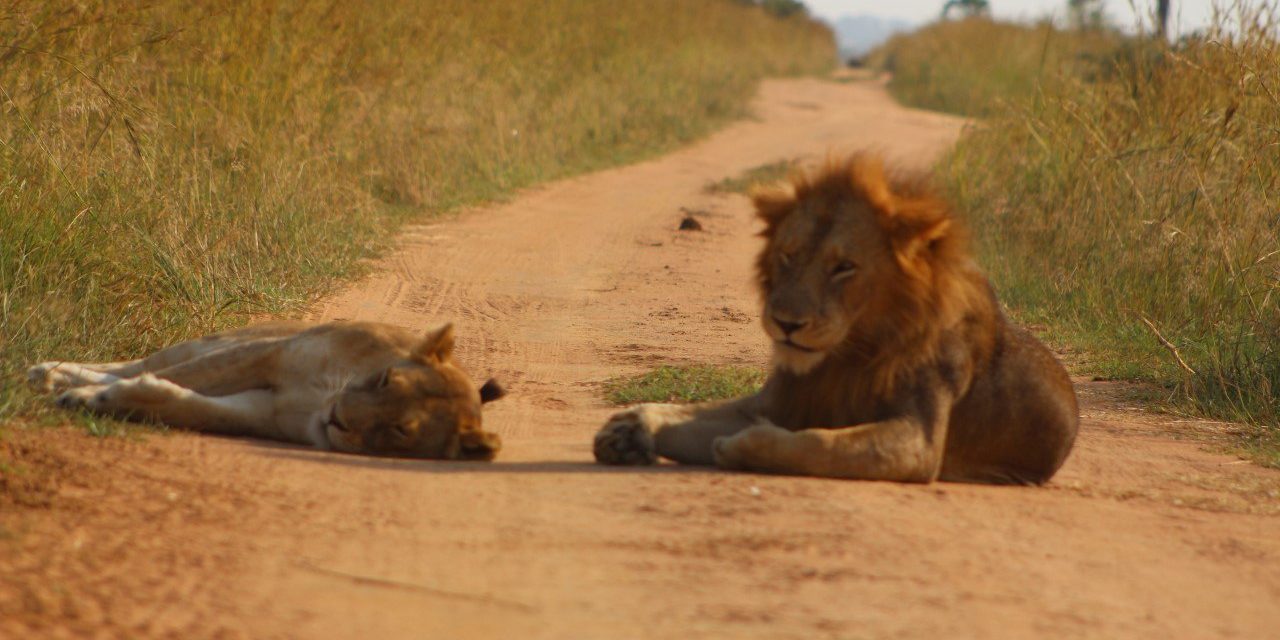Overview
How do lions communicate? Although the lion is sometimes called the “ king of the jungle”, lions are found only in plains and grasslands. The idea of a lion living in a jungle may have originated from a misconception which portrayed a connection between Africa and jungles.

Interestingly, there was a time when these majestic cats were found throughout Africa, Europe and Asia. However, all that changed due to prey deletion, habitat loss and human-to-animal conflict. Currently, lions are found only in Africa and India. There is a lot to learn about these fascinating creatures, one being how they communicate. Generally, lions communicate about their fighting ability, quality of health and desirability for/as mates through sight, smell and sounds.
Social structure among the lions
Lions are the most social segment of the cat family. They are usually organized in matriarchal groups called prides.
Prides consist of genetically related lionesses and their cubs (raised in a communal arrangement). Additionally, the pride females do not tolerate females outside the pride.
When the female cubs reach adulthood, they usually stay with the pride. However, the case differs for the male cubs when they grow into adults. This is because they are pushed out of their pride when they are about two or three years old.
The male lions pushed out of the pride tend to become nomads, and they usually partner with their brothers to form coalitions. They spend a couple of years as nomads. Thereafter, they fight their way to the position of a resident male within a pride.
One interesting fact about males in coalitions is that they can join efforts to get and maintain breeding rights over one or more prides. This portrays the power of unity among these exceptional creatures.
With all that goes on among the lions, it remains clear that a resident male is always tasked to assert his dominance in order to maintain breeding rights within the pride. This also helps to withstand competition from other younger males who may constantly challenge him for his position.
How do lions communicate with each other?

Lions communicate with each other through various ways and forms, and some include the following;
- Head rubbing or nuzzling is a typical greeting behavior for them
- Lions of various ages and genders use various vocalizations (with different pitches and intensities) to communicate with each other, for instance, roars, snarls, meows, hisses and purrs. The males roar to attract mating partners, scare away predators and protect their territories from competing males. Also, when lions separate from one another for a long or short period, they call out to each other. This is more of a soft call, referred to as contact calling.
- Lions use other means of communication, like leaving scent markings and licking each other.
- They also communicate through visual cues such as the darkness of the mane.
How do lions communicate while hunting?
As soon as the group spots the prey, one of the lions initiates the hunt by looking at it. Then, the other lions respond by looking towards the same direction. This is the only significant communication between lions during the hunting process.
After that action, the group spreads out, and some of the lions stalk the prey from a far-off distance to have it encircled. Those same lions launch the attack by driving the target towards the others who ambush from their cover position.
Roaring among the four big cats
Roaring is a unique trait that can only be found among the four big cats, namely lions, leopards, tigers and jaguars. Due to having a longer ligament that enables them to extend and stretch their voice box more than other cat species, these cats can make profound and loud sounds (roars). Meanwhile, other cat species, such as cheetahs, lack the specialized physiology to roar since their voice boxes are similar to those of ordinary house cats that make sounds like meows and purrs.
What is so special about the lion’s roar?
If you have ever heard a lion’s roar from a close range, you will know that it is not just an ordinary sound but rather more of a wave of energy that crashes over you. That said, the lion possesses the loudest roar among all the big cats. You can hear a cry from as far as 8 kilometers away, although lions can listen to a call up to 10 kilometers away. The purpose of roaring to the male lions is to showcase their dominance and strength and defend their territories from other competing males.
Significance of roaring
As earlier mentioned, the roar of a male lion is a means of marking his territory and warning other males against intrusion. It also shows dominance and the male lion’s willingness to protect his territory. Furthermore, younger males frequently look for a chance to defeat the resident male and take over his position in the pride. These males go as far as listening to the roar of the resident lion to judge its strength.
Also, according to various studies, roaring is confined to pride males within their territories, meaning they remain silent outside their territories. Nomadic males, on the other hand, only begin roaring when they take over a pride.
The importance of the strength of a lion’s roar
A strong roar is the first line of defense for a pride male. This protects it from being challenged by the younger and stronger males. If the younger males suspect something unusual about the strength of the pride male’s roar, they may come closer to the pride to find out if there are any possible weaknesses in the pride/resident male. After about three years, most pride males get displaced by the younger, stronger males. That is just how it is most of the time!
Did you know that prides can also roar as a group, and while they do that, each of their voices can be heard being distinctive from the others? The young cubs are also welcome to join in with their little meows.
How do females respond to a roar?
Females with cubs can quickly distinguish between the roars of their pride males, their cubs’ fathers and those of unfamiliar males that could potentially be dangerous. The lionesses are very protective of their young ones because any successful young male challenging the position of the resident male is very capable of killing cubs under one year old to push the females to become sexually active.
Lions’ communication through smell
For males
The sense of smell plays a vital role in communication among lions. Males use scents to mark their territories and to communicate their strength and virility. This tactic is another form of defense, apart from the roar, that protects them from the wrath of the challenging younger males. The pride males mark their territories by urinating and clawing trees, leaving robust scent markers.
If a lion comes across the urine/scent of another lion, it will bare its teeth in the Flehmen grimace. This can look like a snarl or threat display, although it has nothing to do with threatening.
The Flehmen grimace opens an olfactory organ called the vomeronasal organ (the organ of Jacobson), which is found above the palate. Whenever lions sniff deeply and make this expression, they evaluate the individual.
Interestingly, urine enables lions to determine the age, sexual status, sex, estrogen levels, testosterone levels as well as the overall condition of another lion.
Even though the Flehmen grimace occurs among females and males, it is more helpful to males since it enables them to determine when a female is in oestrous.
Also, the sense of smell enables young males to find out if they have an opportunity to defeat the resident male. They base on its roar and scent to decide whether to challenge.
A younger male may be able to tell if the pride lion is still strong and healthy or if it is getting old, weak and vulnerable to an attack.
For females
The female lions communicate their willingness and readiness to mate using pheromones and organic chemicals when they enter oestrous. A male lion can easily pick up these signals even from afar.
The purpose of manes among lions – visual signals of communication
According to several biological findings, the bigger the mane of a lion, the more intimidating he looks to other male lions. This is more significant for the younger males since they always seek opportunities to challenge and defeat the pride male.
Another source of intimidation is the color/ darkness of the mane. A darker mane is an indicator of an increase in the production of testosterone, which is quite intimidating to younger males.
A lion’s mane gives clues to other lions about its ability to fight and its desirability as a mate. Males that have dark manes are more likely to survive for a longer time, possess higher levels of testosterone and heal better after any conflict/fight.
Communication through tactile signals
One of the most common scenarios of tactile communication is the lions’ greeting ceremony. When members of a pride get together after being absent from each other, they usually perform a greeting ritual. It involves sniffing noses, rubbing heads and brushing up against one another. During this event, the lions’ tails are usually held high or draped over the other. The cubs are also involved in the greeting. They rub against the chests and throats of their parents, and they also enjoy playing with the tails.

What is more, lions are often seen piled on top of each other while licking and grooming. The purpose and intention are to strengthen family bonds with the pride.
Safety travel guidelines
Ensure you follow all the necessary travel guidelines to ensure that you are safe and healthy during your safari with us. One of our foremost priorities is to provide the best possible comfort during your tour, so please rest assured that you will be in the best hands.
Some of the travel guidelines include wearing and carrying a sufficient number of surgical masks, moving with an alcohol-based hand sanitizer, vaccination against COVID-19 or taking a PCR test and several others. Book with us today and get the safari of your dreams!
Conclusion
For many people, hearing a lion’s roar out in the wild or witnessing all the different modes of communication among lions may seem like a dream. However, when you book your safari with us, that dream will become a reality. One of the best packages for this incredible experience would be lion tracking in Queen Elizabeth National Park. Undoubtedly, it would be an honor for us to fulfil your safari dream!
